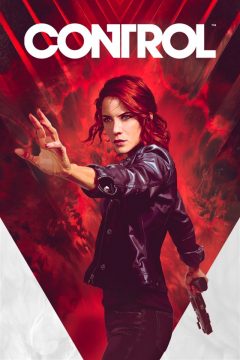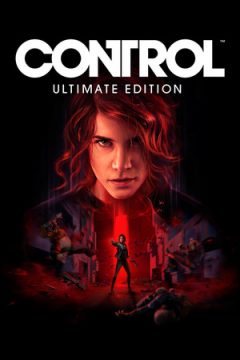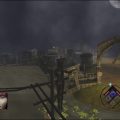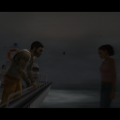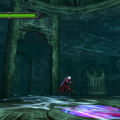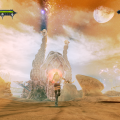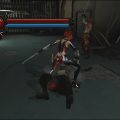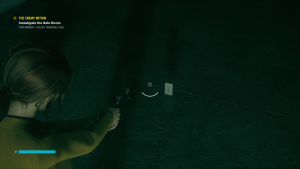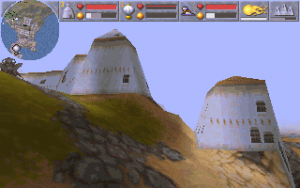If you’ve heard the name Remedy recently, it’s probably because of Control. Ever since the first Alan Wake, the studio had been sort of in the background, surviving on small phone releases (like a remake of Death Rally) and getting some significant attention with the ambitious Quantum Break before quietly going back into the background again. Quantum Break caught some attention as an interactive TV show, and sold well, but it never quite hot a cultural vein to keep it being talked about. During this time, the studio was perfecting their mixed media style, figuring out what people associated them with and perfecting it while branching out in small ways to make something exciting and unexpected. They succeeded with flying colors.

Control was both well received and the fastest selling IP that Remedy has put out since Max Payne, getting to two million units sold in short order. The fact that they not only released a great, extremely creative game to the masses that showed us a glimpse of next gen graphics on PC, but surprised everyone by revealing it as a stealth sequel to Alan Wake of all things in a DLC campaign, is the strongest, most confident move that Remedy has ever done. It marks the next major transitional step for the studio, the team finally nailing their strengths and weaknesses and designing around them to make something whole and satisfying, a confident and distinct game that could only possibly come from Remedy.
Control is about the Federal Bureau of Control, a secret organization sponsored by the United States government, but actually guided by a being/beings in another dimension called The Board, with the end goal of protecting humanity from paranormal threats and learning more about them. Similar to SCP, the bureau deals with OoPs, or objects of power, normal things that have become connected to the astral plane due to mass belief or value placed upon them by people, with altered items as an offshoot. The latter do odd and sometimes dangerous things, but people can bond with the former to gain powers.

Enter Jesse Faden, a young woman who enters the bureau looking for answers about her brother, vanished when they survived a disaster caused by a slide projector OoP, only to suddenly find herself the director of the bureau and bonding with various OoP to gain power. If she doesn’t, then she and the remaining bureau are going to die, because some sort of alien sound called The Hiss is invading and possessing people in mass. Jesse, however, while scared, is also surprisingly excited to finally be here, ready to enter a world beyond normal reality with help of her own extra-dimensional entity called Polaris guiding her.
Sam Lake really brought some of the best writing of his career with this one, shifting Control from a horror experience to a dark absurdist comedy where humans are trying to understand what can’t be understood through soul crushing bureaucracy, leading to nonsense like trying to interrogate a living space suit that says things like “spider time!” or applying electric shocks to a rubber duck that randomly follows people with teleports. This is the funniest game he’s written for bar none, but it’s not an overwhelming humor. The main story remains strong with great characters, especially Jesse. There’s some meta stuff to read into, with her as the chosen protagonist all in on taking the role, showing some hesitancy and realizing that this mad world where she has power is exactly where she wants to be.

Remedy’s love of using live action footage continues here as well, with a lot of FMV movies to find and watch not only for lore dumps, but plot details as well. The show in a game here, Threshold Kids, is also probably the most entertaining one so far, a creepy puppet show that’s only creepy because it was made by bureau members who had no idea what they were doing. That would explain why someone thought it was a good idea to include a screaming skeleton teacher who talks about how everyone has a different sized brain. Even their musical flourishes continue, most of the game lacking a soundtrack and making the music stand out when it hits, especially Poets of the Fall’s new power ballad ‘Take Control,’ playing in the game’s most hype sequence in the ashtray maze during the endgame.
The game itself is also really interesting from a design perspective if you’re familiar with Remedy’s past action games. Where Alan Wake originally wanted to be an open world game but had to go for a straight line design to get it finished, Control finds a happy middle with some search action elements. The entire game takes place in the Oldest House, a living, shifting brutalist style building that leads into countless other realities. Thanks to The Hiss, it’s a messed up place you have to put back into order by claiming control points (checkpoints where you can craft, take side objectives for small rewards, and upgrade your abilities). This requires a ton of exploration, which also includes finding lots of secrets and side missions, the game constantly rewarding you for finding new places by using your powers creatively or paying close attention to the area. You can even get extra ability points by finding select hidden areas.

Making this really stand out is the refusal to use modern waypoints, instead letting the player see what the general area of an objective is on a map and letting them figure out the rest. While the game doesn’t really have much in the way of puzzles, traversing the world is rewarding enough on its own. There’s an old school sense of satisfaction of finding something on your own here lacking from its modern contemporaries, sort of like expanding the thermos hunts from Alan Wake and actually making them rewarding.
Going through the house also involves a mess of combat, best explained as Max Payne and Alan Wake that trades out bullet time or darkness shields for making everyone a glass cannon (even the few armored enemies are brought down with some launched items destroying their defenses) but you get access to a ton of superpowers you can use as long as you have energy (which recharges with time). As you collect OoPs, Jesse can get a dodge, fly, possess weakened enemies, make a shield, and of course, use telekinesis to throw big rocks at people. The Foundation DLC also adds in a destroy and build mechanic with crystals you find during that campaign for puzzle solving and traps.

One of the first powers, launch, is easily the standout ability. It’s a spectacular power that leaves the surrounding area a complete mess, the minimal brutalist look of the game allowing for an explosion of effects every fight as debris flies and hiss possessed explode into a gross aura. You can kill enemies fast, but they can do the same to you, evening the playing field. Areas also tell you if you can explore here with enemy levels, while you have to invest ability points from exploring and completing missions to buff your abilities and keep up with them.
You also have the Service Weapon, a shape shifting handgun belonging to the director that has forms you can unlock with crafting that mimic other weapons (shotgun, rocket launcher, ect) and all of them except spin are useful! The AWE DLC also gives access to the surge form, a sticky grenade launcher with a remote detonation function. You can spend ammo energy that refreshes with time, which takes longer if you empty the clip. You can also put mods on all of these forms to make them stronger, and do the same to yourself, mods dropping in combat and craftable themselves. You can get a maximum of three mods on a form at a time, assuming you can fully upgrade them through the crafting system.

The game has a single set difficulty that thankfully works with a very smooth difficulty curve, though there are now options for less skilled players struggling with it to make it a bit easier to manage. Dying just means you lose some crafting currency and return to the last checkpoint (often a control point, where you can craft and spend ability points). One major issue, though, are that the bosses are fairly uninteresting, mainly damage sponges, some reskins of regular enemies. It’s only forgivable due to how hectic and energetic normal combat is, and the DLC try to make up for it with more unique fights and scenarios. AWE‘s ending fight can be frustrating, but it’s a major highlight for the bizarre design of The Third Thing and that feeling that your win in the match feels more earned then it is with any other fight.
The base game is a ton of fun, though it does sort of fizzle out with a lack of an actual final boss and a weirdly short ending cutscene, offset by the ridiculously awesome ashtray maze segment. What has made Control stick in the conversation among Remedy fans and those somewhat familiar with their past work are the DLC campaigns, The Foundation and AWE (the expedition DLC is just a series of combat challenges). The former follows directly after the main game and explores more of what The Board is and wants, their rival from the main game FORMER, along with the history of the bureau, but the second DLC…oh boy. If you’re wondering why this is in the Alan Wake article series, wonder no more.

AWE is a direct sequel to the previous Alan Wake adventures, and it has a ton of interesting implications for where both Control and Mr. Wake are headed in the future (beyond a single secret you can come across in the main game). It also tries mixing in some Alan Wake mechanics into Control via darkness segments with the power cube mechanic, having you turn on lights and systems with them while trying not to get killed by the new monster stalking you. It’s a clunky puzzle idea, but it does the job and leads to a strong last boss. Praise also can’t be given enough for the tonal evolution of the Alan Wake parts of the DLC, replacing the goofy cheese of the previous games with genuine nightmare scenarios and disturbing developments. There’s a lot that’s going to be followed up on in the future, and Remedy sure looks like they’ll be swinging for the fences.
The ultimate edition is recommended, as it better mixes in the DLC with AWE set after chapter seven and Foundation following after the main campaign. Sadly, 505 Games botched things early on, including forcing owners of the original game to pay for the upgrade (Ultimate has graphical buffs like ray-tracing to really make the game pop on highest settings) and accidentally somehow putting out the upgrade for free for Switch users – and then taking it away. Whoops! Remedy deserves a better business partner then this.

It’s also worth mentioning that the game has a reputation for bugs and framerate issues. Things have been mostly patched clean now, but there are still odd bugs and choppiness here and there, especially on console. The more stable PC version still has a few lingering issues, though, like the odd object spawning in the wrong place (such as this mysterious floor clipping electrical socket cover below). Go with PC if possible if you want the cleanest experience.
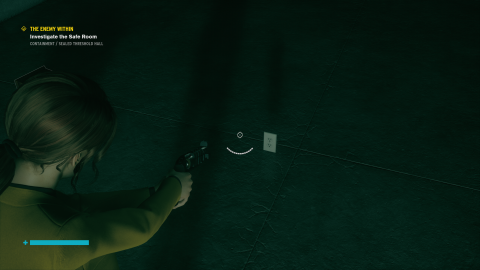
What makes Control particularly exciting is that Remedy’s stated goal with the game is not to form a complete narrative experience, but to make the basis for more stories in the future. There are tons of directions you can take the world of Control, including crossing into Remedy’s old catalog (with hints of a pseudo-Detective Payne running around and one character making reference to Quantum Break). The possibilities are near endless and have finally given the team a sort of freedom they haven’t quite had before. Now they have a cast of characters and concepts that can fit into any setting or scenario. The question is what they’re going to do with them next, and what the promised next Alan Wake is going to be like.
